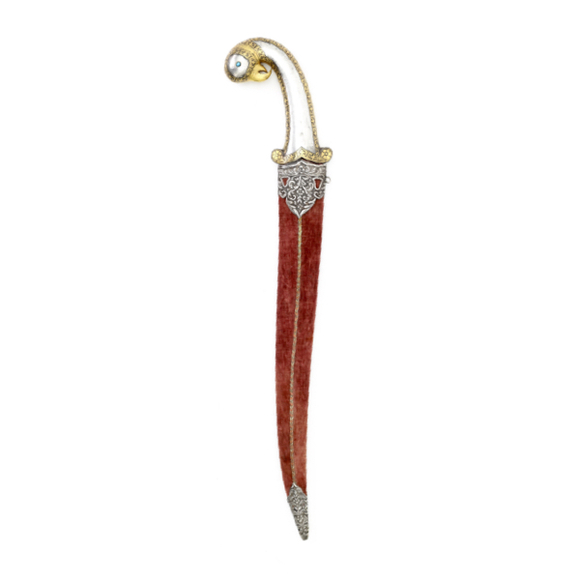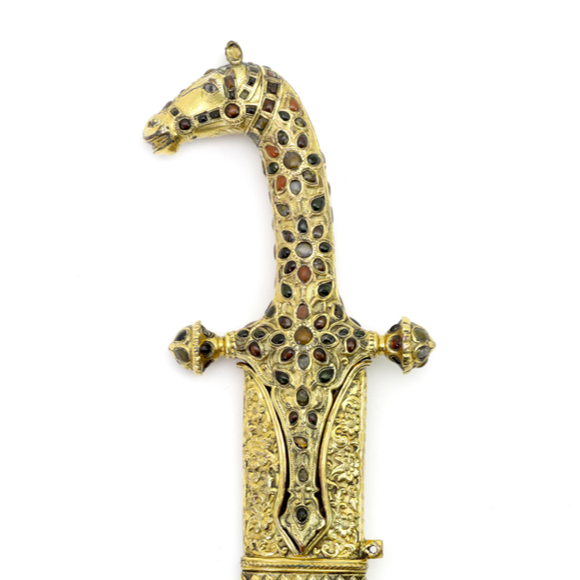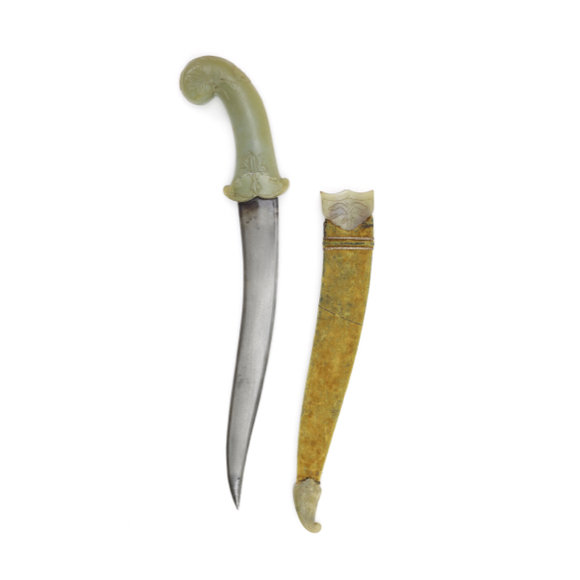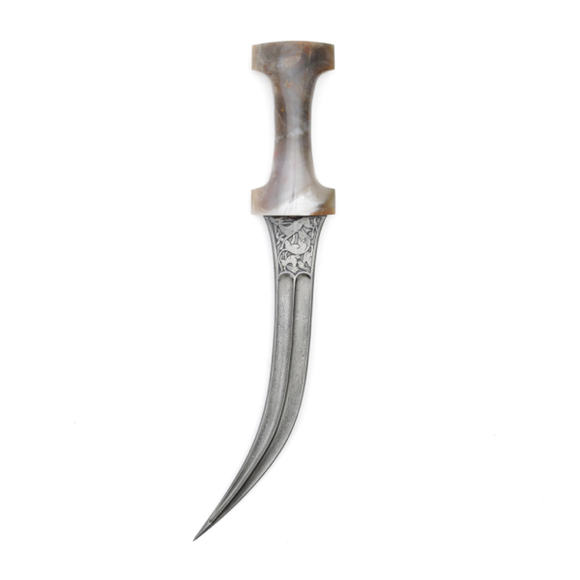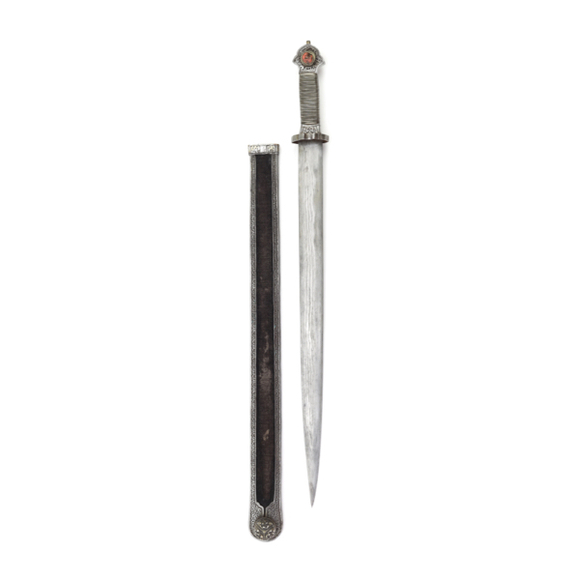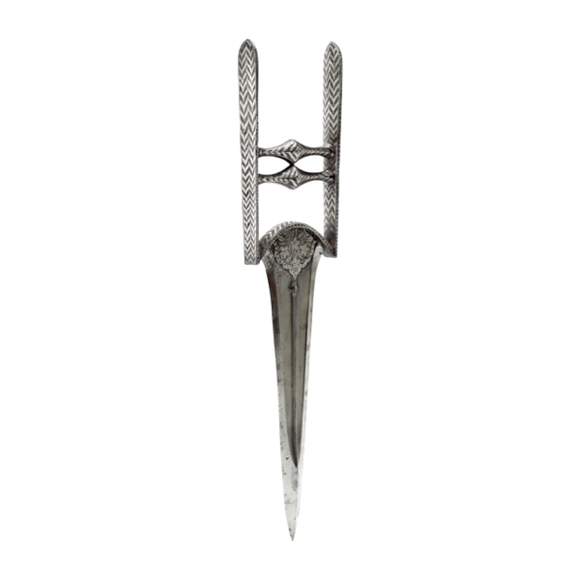Language: English
Source: In common use
Description
Damascening is a bit of an ambiguous term. It is usually meant to describe the inlaying or overlaying of metal with another metal but is also used at times to describe a pattern in the steel of a sword blade or other edged weapon. In both instances, the term is thought to have derived from the city of Damascus, where Europeans first encountered swords made of wootz steel and presumably also with gold or silver overlay decoration.1
Damascening as a surface decoration
When speaking of damascening in terms of a metal surface decoration, two methods are distinguished:
True damascening a.k.a. "true inlay", the application of gold or silver into grooves. A very labor-intensive but durable method.
False damascening, a.k.a. "overlay" applying gold or silver foil or wire over a scored background. A less labor-intensive, but also less durable method.

True inlay on the side bars of a south Indian katar dagger.
The edges of the design are crisp, and where there are losses you see a depression in which the gold or silver was once placed.
Sold by Mandarin Mansion in 2020.

Overlay on the pommel of a north Indian talwar hilt.
When new it looks much like true inlay, but when worn the edges of the design fade to reveal the cross-hatching underneath.
This is the most commonly used method of applying gold or silver to arms in Asia.
Sold by Mandarin Mansion in 2020.
Damascening in terms of steel production
When it comes to describing sword blades, the term "damascened steel" or "damascus steel" is often used to describe either a fine crystalline wootz steel, or a pattern welded sword, both result in patterns on the blade's surface that are brought out by etching.2
What is exactly meant depends much on the scene; among antique collectors and dealers "damascus" or "true damascus" usually means to describe wootz steel. Among modern knife makers and sellers, damascus almost invariably refers to a pattern welded blade.
For the above reasons I personally tend to stay away from the term because there are less ambiguous and more accurate terms to describe the effects seen in steel blades.

Pattern welded steel on an Indian sword blade.
Sold by Mandarin Mansion in 2017.

Wootz steel on a Persian shamshir blade.
Sold by Mandarin Mansion in 2020.
Notes
1. Thomas Holbein Hendley; Damascening on steel or iron as practiced in India. W. Griggs & Sons, Ltd. London 1892.
2. Leo Figiel; On Damascus Steel. First Edition. Andrew Mowbray Publishers, Inc. 1991.

